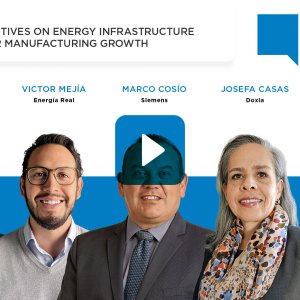
Paradigm Shift Introduces New Possibilities
The Energy Reform gave qualified users (those with a consumption greater than 1MW) the opportunity to purchase electricity from a diverse portfolio of suppliers. Before, large energy consumers were limited to energy supplied through cogeneration or self-supply schemes or had to purchase it directly from CFE. Now, the numerous possibilities require that they step up their analysis game to acquire in-depth information on their energy consumption patterns and needs to select the most suitable option.
Government institutions are playing a pivotal role in helping companies understand the new framework, the market’s operations and the various elements created as a result of the Reform. “The Ministry of Energy has shown a willingness to help private companies navigate the new energy landscape. We found it highly useful to be part of the National Program for Energy Management Systems (PRONASGEn) because it allowed us to greatly improve our energy management, reducing our energy costs considerably at our pasta manufacturing plant,” says Julio Santos, General Manager of Energía para Conservas, whose parent company Grupo Herdez is a leader in the processed food sector and a major producer of Mexican food for the US market. “By participating in PRONASGEn, companies can get free consultancy services and bring experts into their plants to help them improve their energy management.”
The decision-making process for off-takers begins with the choice to purchase electricity on their own or through a qualified supplier. Qualified suppliers are electricity services providers that can buy electricity in the MEM to provide electricity services to qualified users, with whom they have supply contracts and that they represent before CENACE.
Qualified suppliers require a CRE permit to operate, the first of which was awarded this year to Suministro Sustentable de Energía en México (SUMEX). Joaquín Leal, one of SUMEX’s founders, explains the difficult process of innovating in an evolving market: “Breaking ground in the industry has been challenging. The process of becoming qualified suppliers has taken longer than expected mainly due to a lack of communication between the different regulatory bodies involved.”
Qualified suppliers can facilitate the commercialization of energy because they represent several generators in the wholesale market and then transfer their offerings to qualified users. But for off-takers that choose not to engage in business with this figure, the next challenge in the decision-making process is to select the power supplier that best fits their characteristics, needs and daily operations. As companies pioneer in this area, the most repeated advice for off-takers is to analyze every aspect of their decision. As most companies are not used to this type of extensive analysis because of the previous monopolistic regime, this task has proved a challenge for off-takers.
THE ART OF OPTIMIZATION
Some companies have already mastered the art of optimizing their energy supply. Nestlé Mexico for instance, gets 80 percent of their electricity through wind power thanks to a contract with Enel Green Power established under the self-supply element of the previous regulatory framework.
But with an explosion of opportunities resulting from the Energy Reform, the process of analysis begins again and all new options are put under the magnifying glass. Francis Pérez, Shared Value Creation & Sustainability Director at Nestlé México, comments that “with the Energy Reform, we have new and better options to become more competitive, establishing contracts with different companies. Today we are analyzing all our options with the goal of achieving 100 percent from renewable sources.”
The cleanness of an energy source also influences off- takers when selecting their suppliers. As sustainability becomes a more pressing issue around the world, companies seek to supply their power consumption through clean energy sources, preferably renewable resources.
"We are looking at two options: investing in our own generation facilities or purchasing clean energy from a third party. We are exploring the possibility to install solar PV panels in our manufacturing plant in Queretaro, a state with significant solar potential. In other locations, we are also looking at wind energy options. We are not tied to any technology in particular,” says Alfredo Román, Environmental Manager at Tetra Pak. As renewables sources become more important, the element of sustainability will continue to play a lead role in any analysis of optimal power alternatives.
















